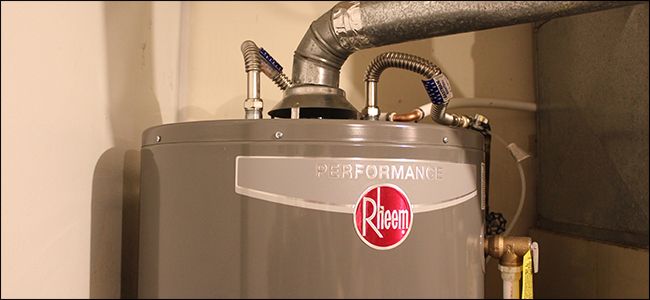Making Sure Longevity of Your Home's Hot Water System: Maintenance Advice
Making Sure Longevity of Your Home's Hot Water System: Maintenance Advice
Blog Article
The article directly below involving Tips on Maintaining a Water Heater is particularly insightful. Don't overlook it.

Warm water is essential for daily convenience, whether it's for a revitalizing shower or cleaning dishes. To ensure your hot water system runs effectively and lasts much longer, normal maintenance is essential. This short article supplies sensible tips and insights on exactly how to preserve your home's warm water system to stay clear of disturbances and costly repairs.
Introduction
Preserving your home's hot water system may appear difficult, however with a couple of basic actions, you can guarantee it runs efficiently for several years ahead. This overview covers everything from understanding your hot water system to DIY maintenance tips and knowing when to hire expert assistance.
Significance of Preserving Your Hot Water System
Regular maintenance not only extends the lifespan of your hot water system but also guarantees it runs successfully. Disregarding upkeep can cause reduced effectiveness, higher energy bills, and also early failing of the system.
Indications Your Warm Water System Requirements Maintenance
Knowing when your warm water system requires focus can stop major issues. Keep an eye out for indicators such as irregular water temperature, unusual noises from the heating system, or corroded water.
Purging the Water Heater
Flushing your hot water heater gets rid of sediment buildup, boosting performance and extending its life.
Checking and Changing Anode Rods
Anode poles avoid corrosion inside the container. Checking and replacing them when broken is vital.
Complicated Issues Needing Professional Aid
Examples consist of major leakages, electrical issues, or if your water heater is constantly underperforming.
Routine Specialist Maintenance Perks
Professional upkeep can include complete inspections, tune-ups, and making sure compliance with security criteria.
Examining and Readjusting Temperature Level Setups
Changing the temperature level settings makes sure optimum efficiency and security.
DIY Tips for Upkeep
You can carry out numerous maintenance jobs on your own to keep your warm water system in top problem.
Looking for Leakages
Regularly examine pipelines and connections for leakages, as these can result in water damages and higher costs.
Understanding Your Warm Water System
Before diving right into maintenance tasks, it's handy to comprehend the standard components of your warm water system. Generally, this includes the hot water heater itself, pipes, anode poles, and temperature level controls.
Monthly Maintenance Tasks
Routine monthly checks can assist capture minor problems prior to they escalate.
Checking Stress Relief Valves
Checking the pressure relief valve guarantees it operates correctly and stops excessive pressure accumulation.
Shielding Pipes
Protecting warm water pipes decreases warmth loss and can conserve energy.
When to Call an Expert
While do it yourself maintenance is valuable, some issues need specialist proficiency.
Conclusion
Routine upkeep of your home's warm water system is essential for effectiveness, longevity, and cost savings. By following these suggestions and understanding when to seek expert assistance, you can guarantee a reputable supply of hot water without unforeseen interruptions.
How to Maintain an Instant Hot Water Heater
Before tinkering with your hot water heater, make sure that it’s not powered on. You also have to turn off the main circuit breaker and shut off the main gas line to prevent accidents. Also turn off the water valves connected to your unit to prevent water from flowing into and out of the appliance. 2. When you’re done, you have to detach the purge valves’ caps. These look like the letter “T†and are situated on either side of the water valves. Doing so will release any pressure that has accumulated inside the valves while at the same time avoid hot water from shooting out and burning your skin. 3. When the purge valves’ caps are removed, you have to connect your hosing lines to the valves. Your unit should have come with three hoses but if it didn’t, you can purchase these things from any hardware or home repair shops. You can also get them from retail stores that sell water heating systems. Read the user’s manual and follow it to complete this task properly. When the hosing lines are connected, open the purge port’s valves. 4. You should never use harsh chemical cleaners or solutions when cleaning your unit. Make use of white vinegar instead. It should be undiluted and you’ll probably use about 2 gallons. 5. Now flush your water heater. This task should probably take about 40 minutes. We can’t give you specific directions for this because the procedure is carried out depending on the type, model and brand of your heater. With that being said, refer to the user’s manual. 6. When you’re done draining the unit, you have to turn off the purge port valves again. Remove the hosing lines that you earlier installed on each of the water valves. Put the valve caps (purge port) back in their respective places and be very careful so as not to damage the rubber discs that are found inside these caps. 7. Now that everything’s back in place, check your user’s manual again to find out how to reactivate your water heating system. 8. Once it is working, turn one of your hot water faucets on just to let air pass through the heater’s water supply pipes. Leave the tap on until water flows smoothly out of it. https://www.orrplumbing.com/blog/2014/september/how-to-maintain-an-instant-hot-water-heater/

Hopefully you liked our part about Tips on Maintaining a Water Heater. Many thanks for spending some time to browse our article. Please pause to distribute this blog post if you appreciated it. Thanks so much for your time spent reading it.
Click Here Report this page